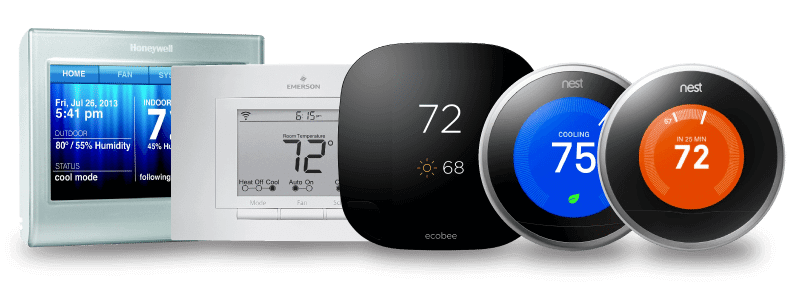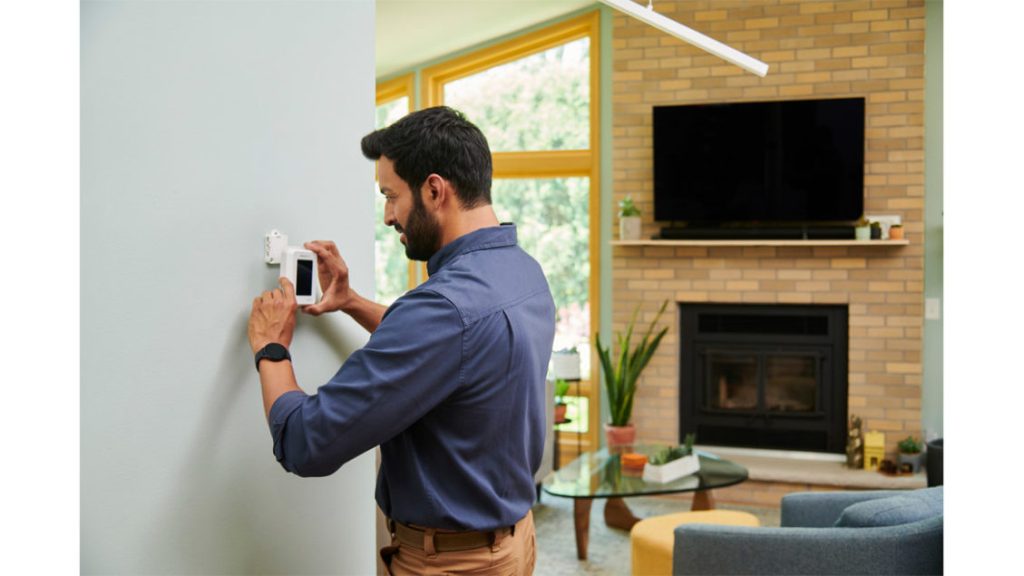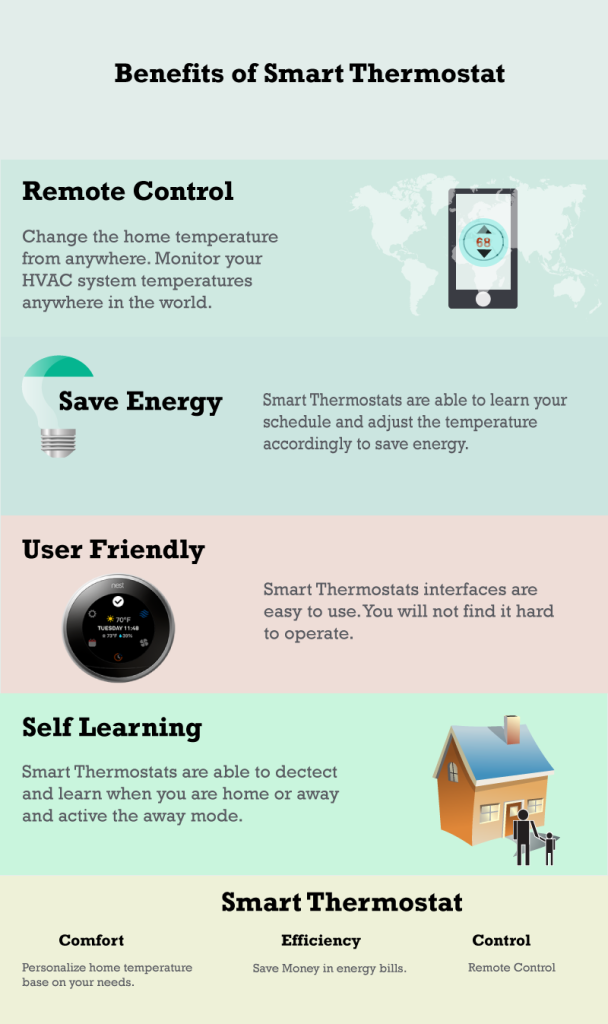In recent years, the integration of technology into our homes has transformed the way we interact with our appliances. One notable advancement in the realm of home comfort is the emergence of smart thermostats. These intelligent devices are not only changing the way we control our air conditioning systems but are also revolutionizing the way we approach AC maintenance, making cooling more efficient, convenient, and environmentally friendly.
The Evolution of Thermostats: From Analog to Smart

Traditionally, thermostats were basic devices that allowed us to adjust the temperature settings in our homes. However, the transition from analog to digital, and now to smart thermostats, has introduced a plethora of features that enhance control and energy efficiency. Smart thermostats are equipped with Wi-Fi connectivity, sensors, learning algorithms, and mobile apps that enable users to remotely monitor and manage their home’s cooling system.
Key Benefits of Smart Thermostats for AC Maintenance
- Precision Temperature Control: Smart thermostats provide more accurate temperature control than their traditional counterparts. This precision ensures that your AC unit runs only when necessary, reducing energy wastage and prolonging its lifespan.
- Learning Capabilities: Many smart thermostats employ machine learning algorithms to adapt to your schedule and preferences. They learn when you’re at home, away, or asleep, automatically adjusting the temperature to optimize comfort and energy consumption.
- Remote Accessibility: The ability to control your AC system remotely through a smartphone app offers unparalleled convenience. You can adjust settings from anywhere, ensuring your home is comfortable when you arrive without leaving the AC running all day.
- Energy Efficiency Insights: Smart thermostats provide valuable insights into your energy consumption patterns. These insights empower you to make informed decisions about how to further optimize your AC usage and lower your utility bills.
- Geofencing Technology: Some smart thermostats utilize geofencing, which uses your smartphone’s location to determine whether you’re home or away. This enables automatic adjustments to your home’s temperature based on your proximity, conserving energy when you’re not around.
Modernizing AC Maintenance with Smart Thermostats

- Regular Updates: Smart thermostats receive software updates that improve functionality and address potential bugs. Regularly updating your thermostat ensures optimal performance and compatibility with other connected devices.
- Filter Change Reminders: Maintaining clean air filters is crucial for efficient AC operation. Many smart thermostats can track filter usage and send reminders to replace them, enhancing your system’s performance and indoor air quality.
- Diagnostic Notifications: Some smart thermostats can detect anomalies in your AC system’s performance and alert you to potential issues. This early warning system can prevent small problems from escalating into major malfunctions.
- Usage Reports: Smart thermostats often provide detailed reports on your cooling patterns, helping you identify trends and adjust your settings for greater efficiency.
- Integration with Home Ecosystems: Many smart thermostats can integrate with other smart home devices, such as fans, blinds, and lighting systems. This integration can optimize your home’s overall energy usage, working together to provide maximum comfort while minimizing wastage.
Utilizing Advanced Features of Smart Thermostats for AC Maintenance
- Zone Control and Multi-Room Cooling: Some smart thermostats support zone control, allowing you to set different temperatures for different areas of your home. This feature is particularly useful for multi-story houses or homes with varying cooling needs. By optimizing temperatures in specific zones, you can save energy and ensure everyone’s comfort.
- Adaptive Recovery: Smart thermostats use adaptive recovery algorithms to gradually reach your desired temperature at the scheduled time. This prevents your AC from working harder than necessary to cool your home rapidly, reducing energy consumption and wear on the system.
- Vacation Mode: Planning a vacation? Smart thermostats often come with a vacation mode that lets you set your home to an energy-saving temperature while you’re away. You can program it to return to your preferred comfort level just before you return.
- Demand Response Programs: Some utility companies offer demand response programs that reward homeowners for reducing energy consumption during peak demand periods. Smart thermostats can participate in these programs by automatically adjusting your AC settings when electricity demand is high.
- Voice Control and Integration: Many smart thermostats are compatible with virtual assistants like Amazon Alexa, Google Assistant, or Apple’s Siri. This means you can control your AC settings using voice commands, enhancing convenience and reducing the need to physically interact with the thermostat.
- Humidity Control: Proper humidity levels are essential for indoor comfort. Some advanced smart thermostats can monitor and control humidity levels, ensuring your home remains comfortable and preventing mold growth.
Installation and Compatibility
Tips for Maximizing the Benefits of Smart Thermostats

- Set a Comfortable Schedule: Take advantage of your smart thermostat’s scheduling features to create a customized cooling schedule that aligns with your daily routine. This ensures your AC operates efficiently when you need it most and conserves energy when you’re not at home.
- Utilize Geofencing: Geofencing technology is an excellent tool for ensuring energy efficiency. By connecting your smart thermostat to your smartphone’s location, it can automatically adjust the temperature based on whether you’re approaching or leaving your home, reducing energy waste.
- Monitor Energy Usage: Most smart thermostats provide energy usage reports that give you insights into how much energy your AC system is consuming. Use this information to identify trends and make informed decisions about adjusting your settings for optimal efficiency.
- Program Temperature Ranges: Instead of setting a single fixed temperature, consider programming a temperature range. This allows your AC system to cycle on and off within that range, preventing frequent and energy-intensive temperature fluctuations.
- Regularly Check and Adjust Settings: While smart thermostats are designed to learn from your behavior, it’s a good practice to review and adjust your settings periodically. Changes in your routine or preferences may require updates to ensure your system’s efficiency.
- Maximize Energy Savings Mode: Many smart thermostats have an energy savings mode that prioritizes energy efficiency over rapid cooling. This mode might adjust the temperature slightly or limit the AC’s runtime to save energy while maintaining reasonable comfort.
Potential Challenges and Solutions
- Connectivity Issues: Since smart thermostats rely on Wi-Fi connectivity, network interruptions can affect their performance. To prevent this, ensure a stable and reliable internet connection and consider placing Wi-Fi extenders if needed.
- Compatibility: Not all HVAC systems are compatible with every smart thermostat model. Before purchasing, consult your HVAC technician to ensure that the thermostat you choose will work seamlessly with your system.
- Learning Period: Smart thermostats often require a learning period to adapt to your habits and preferences. Be patient during this phase, as the thermostat’s efficiency will improve over time.
- Future Trends in Smart Thermostats and AC Maintenance
- As technology continues to evolve, smart thermostats are likely to become even more advanced. Here are a few potential future trends:
- Artificial Intelligence: Enhanced AI algorithms could further optimize temperature control by analyzing data and adjusting settings in real-time for maximum efficiency and comfort.
- Environmental Sensors: Future smart thermostats might include environmental sensors that measure air quality, pollutants, and more, allowing for more comprehensive indoor comfort management.
- Integration with Renewable Energy: Smart thermostats could integrate with renewable energy sources like solar panels, allowing homeowners to direct surplus energy to power their AC systems.
Evolving Interactions with Smart Thermostats
- Smartphone Integration: Smart thermostats seamlessly integrate with smartphones, allowing you to control your AC system remotely. Whether you’re stuck in traffic on a scorching day or planning to arrive home early, you can adjust your home’s temperature accordingly to ensure comfort upon your arrival.
- Voice Commands: The rise of virtual assistants like Amazon Alexa, Google Assistant, and Apple’s Siri has made voice control a game-changer. With a simple command, you can adjust your AC settings, change modes, or inquire about the current temperature, making interaction even more intuitive.
- Smart Home Synergy: The future holds exciting possibilities for interconnected homes. Imagine a scenario where your smart thermostat collaborates with your smart blinds, adjusting sunlight and temperature in sync for optimal comfort and energy efficiency.
Environmental Impact and Energy Savings

- Reducing Carbon Footprint: The energy efficiency enabled by smart thermostats translates to reduced energy consumption and lower carbon emissions. By optimizing cooling and heating, these devices play a role in mitigating climate change.
- Financial Savings: Energy-efficient operation translates into lower utility bills. Over time, the savings you accrue through optimized cooling can offset the initial investment in a smart thermostat.
Integration with Renewable Energy Sources
- Solar Power Synergy: The integration of smart thermostats with solar panels can be a game-changer. On sunny days, the thermostat could prioritize cooling activities, leveraging the surplus energy generated by solar panels to ensure a comfortable environment.
- Peak Load Management: Smart thermostats can participate in demand response programs, helping to manage peak energy demand. During periods of high demand, the thermostat can adjust cooling patterns to ease the load on the energy grid.
- Overcoming Challenges
- User Education: The adoption of smart thermostats requires users to understand their capabilities fully. Manufacturers and service providers should focus on educating users about features, potential energy savings, and efficient usage.
- Affordability and Accessibility: While prices have been dropping, some users may still find smart thermostats expensive. Initiatives to make these devices more affordable and accessible to a broader range of consumers could drive increased adoption.
Regulation and Privacy Considerations
- Data Privacy: As smart thermostats collect data about users’ daily routines and preferences, data privacy becomes a concern. Manufacturers must implement robust privacy measures to safeguard user information.
- Energy Efficiency Regulations: Governments and environmental agencies are likely to introduce stricter regulations regarding energy efficiency in homes. Smart thermostats could play a pivotal role in meeting these standards.
Final Thoughts
Smart thermostats are more than just devices; they are catalysts for change in how we cool our homes. With their intuitive interfaces, learning capabilities, and integration with modern technology, they are modernizing AC maintenance and enhancing energy efficiency. As these devices continue to evolve and become more commonplace, they hold the potential to revolutionize not only how we manage our homes’ comfort but also how we interact with and contribute to our broader environment. As consumers, manufacturers, and innovators embrace this trend, the future of cooling becomes smarter, more sustainable, and better for all.
